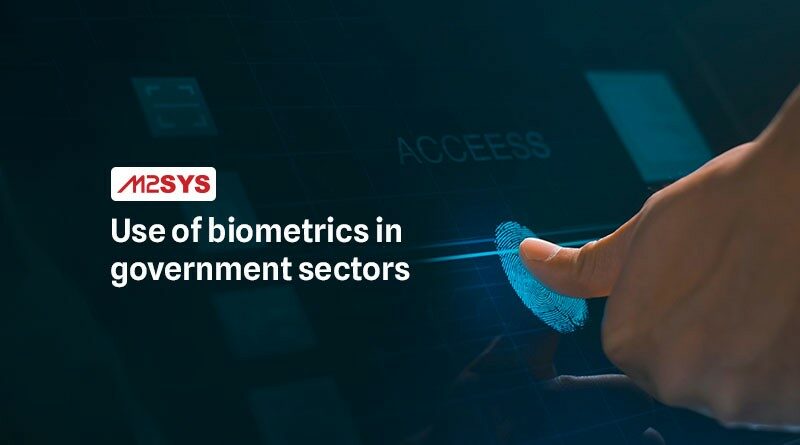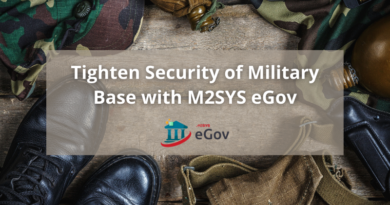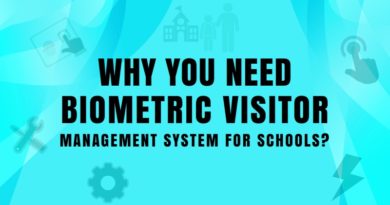Use of Government Biometric Systems & it’s Advantages
While concerns around privacy exist, the use of biometrics in government services, or government biometric systems, is on the rise due to its undeniable advantages. Security breaches can be a stark reminder of the value of robust authentication methods. However, beyond security, government biometrics offers a multitude of benefits that extend far beyond security. Here’s where M2SYS eGovernment solutions come into play. By leveraging biometrics, eGovernment platforms can streamline processes, enhance security, and personalize the citizen experience, ultimately creating a more efficient and secure government for all.
History of Government Biometrics Technology
Terrorists and crooks are identified using cutting-edge biometric technology. Indeed, identifying individuals based on fundamental physical or behavioral characteristics has been practiced for thousands of years. According to evidence, fingerprints were placed on clay tablets during Babylonian business transactions around 500 BC. In the fourteenth century, Chinese merchants employed children’s handprints and footprints to differentiate them. Traders were also distinguished by their physical traits in ancient Egypt. The industrial age generated tremendous city expansion, and by the mid-1800s, the need to identify the wider population and offenders was necessary. Some officers used the Bertillon method (also known as anthropometrics), which used index cards to record arm length, height, and other physical measures. However, because there were no standards in place, mistakes were common.
Edward Henry, the inspector general of police in Bengal, India, devised the Henry Method, a classification system still in use today. It assessed one metric a fingerprint — that became the measure of preference in the late 1800s.A new potential for digital biometrics was developed with the increasing availability of computers in the late twentieth century. Even though using the iris for authentication was proposed in the 1930s, it wasn’t until 1994 that the first iris recognition algorithm was developed and became legally accessible.
Face recognition was utilized during the 2001 Super Bowl in Tampa to take a picture of each of the 100,000 fans through a surveillance camera and compare it to mug photographs from the Tampa police department. The National Science and Technology Council established an official biometrics subcommittee in 2003, and the Department of Defense developed the Automated Biometric Identification System (ABIS) the following year to assist, track and detect risks and vulnerabilities.
Use of Biometrics Technology in the Government Sector
History claims that government biometric systems have been used for decades. The biometric technology & government sectors are intertwined, and the implications are enormous. Here are a few common uses of biometric technology in the government sector:
1. Biometric Voter Registration System
Voter registration using biometrics is one of the most common uses of biometric technology in the modern era. To maintain and safeguard democratic ideals, governments increasingly resort to biometric voting technologies to assist and enable fair, legitimate elections free of fraud and unlawful behaviors.
2. Biometric Prison Management
A prison management solution is a contemporary solution that allows the jail authority, public safety departments, and governments to handle prisoner identities safely and securely. There are very few biometric prisoner management systems out there, and PrisonSecure is the only system that uses Machine Learning Technology/Artificial Intelligence (AI). PrisonSecure anticipates individual prisoner identities based on comprehensive analytical computations.
3. Biometric Law Enforcement
Biometrics has made the lives of people who are putting criminals behind bars easy too. Using ePolice, law enforcement officers can record, manage and create criminal demographic databases to develop a better world for the general population.
4. Biometric Border Control System
Increased visitor arrivals and international terrorism pressure border security staff to improve their security systems. Manual checking is time-consuming and poses a security risk. SecuredPASS by M2SYS is a biometric border control system that can be used to authenticate travelers quickly, securely, and with reliable results.
5. Military Base Management System
Military facilities and organizations store highly secretive technology, weaponry and intelligence. The Military Base Management Solution employs biometric identification to help defend the region by limiting unlawful entry/exit, flagging dubious or hazardous persons, and securing access to weapons, ammunition, and confidential data.
Advantages of Government Biometric Systems
The use of biometrics technology in government sectors is not limited to the ones mentioned in this article. There is extensive use of biometric technology in government sectors, and the advantages are enormous. Here are a few advantages of biometrics technology aligned with the public sector:
1. Better National Security
National security is a constant battle with the forces of terrorism. Biometrics authentication is the only option to handle these unlawful practices better. By implementing biometric authentication at airports, a government can keep track of any suspect coming in and out of the country. Biometric technology at high-security facilities can prevent leaks of sensitive information that could lead to a national crisis.
2. Better Coordination Amongst Agencies
By using biometric technology, different government bodies can easily collaborate to ensure better coordination, leading to zero information leakage. For example, law enforcement agencies & prison management can team up to keep track of inmates going in and out of prison.
3. Better Scalability
No matter how big or small it is, any government service must be scalable. Let’s talk about AFIS/ABIS for ePassports. The number of users will keep increasing over time. The system should be capable of managing the use of the extra amount of data being entered and processed. This is possible only when you use a biometric authentication and matching service.
Implementing biometric authentication in the government sector has made life easier for authorized personnel and the general public. The uses and advantages are beyond imagination, and keeping the country safe from local and international threats is mandatory.










